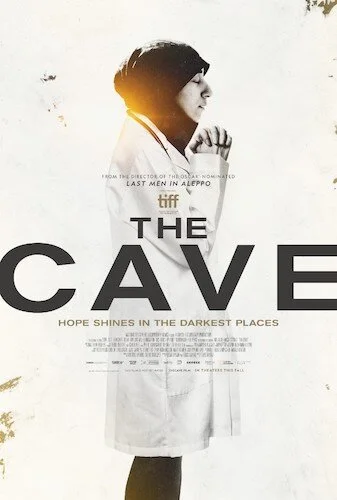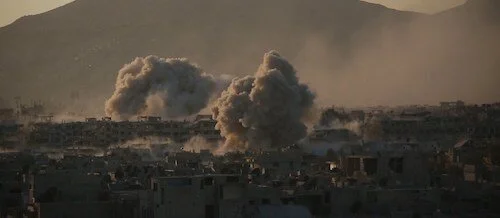The Cave
At the 2019 Toronto International Film Festival, The Cave gloriously won the Peoples’ Choice Award for the documentary of the season. No, this has nothing to do with the Tom Waller biopic also called The Cave that came out in 2019 as well, although the coincidences are staggering (only on the surface, of course). There are some positive connections nonetheless: this is the next great documentary by cinematic journalist Feras Fayyad, after his outstanding Last Men in Aleppo. With this The Cave film, Fayyad has continued his commentary on the current state of the Syrian Civil War (which is, obviously, still going on). Knowing this, The Cave obviously won’t resolve in a conventional way, but instead in a way that is fitting to the film. With the help of National Geographic (mainly as a distributor), The Cave is a powerful art piece on the destructions of war. No wonder why it wowed the people of Toronto over!
A sister film to Last Men in Aleppo of sorts, this time we follow one particular doctor (Amani Ballour) that operates in a hospital that resembles the titular cave. Much of the film takes place in here, and it’s dark and grim. Much of the light is provided artificially. You’re bound to feel claustrophobic. On the contrary, some of the exterior shots (which are magnificently captured) are of bombs going off and other dangers. Do you prefer the open air full of possible harm, or the protected dens? The Cave seems to find solace in the darkness, and for good reason. Even when we are safe from harm, you can hear explosions in the distance, that are far too close for comfort. The medical staff just keep going. They’re sadly used to this by now.
An explosion being recorded presumably by drone.
Since The Cave operates on footage being sewn together (rather than a blatant plot), it turns into a never ending limbo, where destroyed bodies are brought in to be worked on. Each case is a different story. The ages range from babies to the elderly. Each time there’s a whole new story, despite The Cave’s resistance of shoving a tale down your throat. While these cases go on, Ballour is doing all that she can to help her fellow community members, all while enduring sexist nonsense (Really? at a time like this, people can afford to be stupidly ignorant? Not that sexism is ever okay, mind you). She leads a female team who deal with the brunt end of misogyny as well. That’s the only form of continuity that The Cave features: the progressions and regressions of the intolerant, during times of need.
You may lose track of The Cave as a documentary, especially in the final third of the film. It almost feels like the climax of a horror film (or at least a thriller), with booming sounds, Matthew Herbert’s chilling ambient score, and frightening images being served by themselves without any narration. It’s as if the “point” of the film is being buried underneath the weight of all of these images of destruction, and it becomes incredibly overwhelming. The end of the film (and, by that, I mean the credits) is almost a literal breath of fresh air: you’ve escaped the evils of humanity, and the oppression of sexist legislations. That’s your privilege as a film viewer. For those that have to live this every day, they aren’t so lucky. It doesn’t just end after an hour and forty minutes.
Amani Ballour taking in some solace amidst the destruction around her.
Knowing that some of the people profiled in The Cave died during production, and that some of the subjects are on the run or stuck where they are, is horrifying. You’ve just seen dedicated doctors trying to help chip away at a never ending nightmare, thus restoring at least a bit of humanity in an obliterated Syria. This is the thanks that they get. We get their story, but what do these miracle workers themselves get? After all of the lives they saved, and the fallen that they tried their best to help. The Cave also provides voices to those that end up being worked on in this hospital, and their loved ones that scream and cry from afar. You have agony, desperation, and nonstop turmoil, all within the darkest of corridors. This really feels like a scary movie, but the sad thing is this is all but a fabrication. Need I remind you that this is of the same subject that Feras Fayyad has tackled before? This isn’t even the only Academy Award nominated documentary on such a subject (For Sama being the other one). This is all too real. The Cave may put a cinematic sheen on it, but it’s sadly not going anywhere anytime soon.
Andreas Babiolakis has a Masters degree in Film and Photography Preservation and Collections Management from Ryerson University, as well as a Bachelors degree in Cinema Studies from York University. His favourite times of year are the Criterion Collection flash sales and the annual Toronto International Film Festival.







